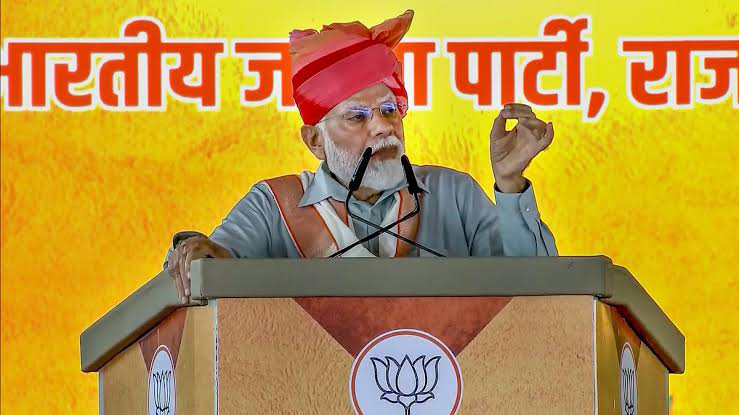New Delhi: As 2018-2019 showed, the outcome of the state assembly elections in critical Hindi heartland states, four months before the Lok Sabha elections, is not an accurate window into the popular mood at the national level. The Congress won Rajasthan, Madhya Pradesh and Chhattisgarh comfortably in December 2018; the BJP won 62 of the 65 seats in the Lok Sabha from the three states in 2019.Still, while the results were never going to be a guide for what will happen in 2024, especially if the BJP lost, the nature of the outcome, where the BJP swept the three states, does suggest the party has a huge advantage heading into the national polls. The Congress did win Telangana, and while it is a remarkable triumph, the verdict doesn’t really resolve the party’s political crisis, an almost existential one, north of the Vindhyas.Instead, the verdict reveals that Narendra Modi’s appeal and magical connect with voters is firmly intact — especially in the heartland. It shows that BJP’s organisation remains robust and cadres remain motivated. It deprives the Congress both of power and resources that would have helped during the Lok Sabha polls. And it reinforces the fact that the BJP’s narrative has resonance among voters, while the Congress’s narrative, for all its creativity, doesn’t carry the same appeal. Examine each of these factors separately and the contours of the 2024 battle become clearer.

The Modi puzzle
There is a puzzle when it comes to Modi and state elections. After 2018, Indian politics has witnessed a trend where voters haven’t hesitated to opt for the Congress or regional forces in state elections, even when Modi has been campaigning. Such outcomes have been, accurately, explained as the dominance of local factors over the national because the same voters tell reporters and pollsters that they will vote for the PM during Lok Sabha elections. At the same time, it is also true that Modi’s appeal continues to help in state elections, as it did in this round.
How does one explain this seeming analytical inconsistency? The BJP may have an incentive in crediting Modi for wins and insulating him from losses — but there is something deeper at play. When the Congress or regional forces are able to get the right mix of local issues, local leadership, local caste coalitions, and local narrative — and this is combined with deep resentment against BJP’s local leadership — it is hard for Modi to offset all the disadvantages. But when voters aren’t animated by local alternatives on offer, even if they aren’t enamoured by BJP’s local political platform, Modi’s presence and connect makes a difference.
The organisational muscle
Converting this connection with voters to actual votes is hard work. The BJP’s organisational robustness is no recipe for success; after all, with the same structure, it has lost a series of state elections, including, most recently in Karnataka.
But the party’s careful attention to the issue of organisational leadership at the state, district, constituency, block and booth levels; its ability to motivate workers at the right time; its enormous resource advantage, propelled both by central and local funding; its clinical assessment of caste dynamics at the local level; its ruthless strategy of ticket distribution (think of its decision to send top national leaders, including central ministers, to contest elections in Madhya Pradesh or remove incumbents to introduce fresh blood and offset local anti-incumbency); and its record of defending the party’s performance as an incumbent and attacking the ruling party’s record when in opposition is quite remarkable and does help for sure.
Modi, Amit Shah and JP Nadda now also have a set of leaders who can be trusted with boosting the party’s muscle on the ground — from the low-key but politically effective and experienced Bhupendra Yadav to the technocrat turned minister Ashwini Vaishnav (both in charge of MP), from the veteran Om Mathur to one of Modi’s favourites health minister Mansukh Mandviya (in charge of Chhattisgarh), from Pralhad Joshi (in charge of Rajasthan) to a range of others (think Dharmendra Pradhan who was in charge of UP in 2022 or Himanta Biswa Sarma who runs party affairs in the Northeast to Sunil Bansal who helped win UP in 2017 and 2019 and is now in charge of eastern states).
All of this helped in the state elections, but it will be an even bigger asset in national elections, especially when the opposition is confronted by more serious organisational deficits given the scale of national polls.








